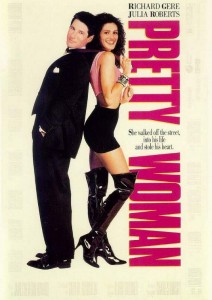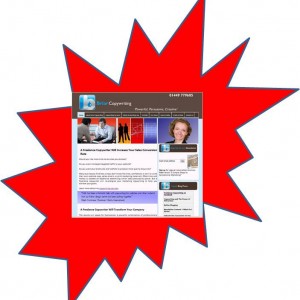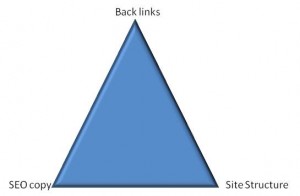Entries Tagged 'blogging for business' ↓
October 18th, 2010 — blogging, blogging for business, copywriter, freelance copywriter
 What type of blogger are you?
What type of blogger are you?
Do you spend time writing posts and publishing them only to move on to the next one and start the process all over again?
But as you launch each one out into cyber space don’t forget about it. The content is valuable so you have to make the most of it.
Unlike many other forms of communication, a published blog won’t disappear (unless you delete it of course) so it’s vital you make the most of its content and keep it working for you.
So how do you keep the buzz going?
Here are my top 6 tips to extend the shelf life and appeal of your blog posts:
1. Follow
Often over time the information in your original blog post may need updating or it could become current again due to what’s happening in the world.
Take the opportunity to write a follow up post linking back to your original one. This will not only bring the first post out of moth balls, it will also give added value to your readers by updating them on new ways of thinking.
2. Links
Whenever you write posts that relate to past ones show this by linking them. Not only will this generate a wider audience for your original post it will also highlight the relevancy of your blog for that particular subject.
3. Re-Tweet
Twitter is definitely the blogger’s best friend. It is a great way to get your posts out to a wider readership. If after a period of time your post is still relevant, bring to your followers attention by re-tweeting it.
Don’t do it too frequently though as your followers won’t want to be bombarded by links to blog posts all the time.
4. Repurpose content
As you’ve spent time creating the content in the first place, why not reuse it? Spinning it into an article will help get your name out there as an authority on your topic. Plus using keyword rich links back to your website will help your SEO strategy.
5. Optimise
The beauty of writing for the web is that you can optimise your text to maximise your chances of appearing in the search engine results.
Using carefully chosen keywords will help ensure your blog posts remains prominent for a long time to come.
6. Newsletters
If you send out a monthly newsletter, why not use some of your posts as the basis for news and information?
Take a snippet of the text and add a ‘read more’ link which will take your reader to the original post. This is a great way to pass on valuable information and boost your blog’s readership.
Posts will remain active for as long as they appear on your blog so why not make the most of them?
Sally Ormond of Briar Copywriting is a freelance copywriter and prolific blogger
September 22nd, 2010 — blogging, blogging for business, copywriter, freelance copywriter

After watching Pretty Woman for the umpteenth time the other day, one line hit me – in the scene where Julia Roberts struts her way over to Richard Gere’s car, her room mate Kit De Luca shouts: “Work it. Work it, baby. Work it. Work it. Own it.”
Well, that’s the only way you’re going to make a ripple in the pool of blogging – by working at your structure and presentation.
Writing a good bog isn’t just about having an idea and running with it. Of course, great ideas are important but so is how you execute them to produce informative, well written posts that people are going to want to read.
I’ve been blogging for several years now. Coming up with a fresh batch of ideas is tough, but inspiration can come from anywhere – films (like above), conversations, letters, images, experiences etc.
So what do you do when you’ve got an idea?
How to shape a great blog post
As I see it, there are five main steps you have to go through to create a great blog. It’s a system that works for me; this is how it goes:
1. Title
The title of your post is really important. It has to grab the attention of your reader – if it doesn’t they aren’t going to bother wasting any time over it. The best titles are ones that are very specific. Tell them what your post is about.
2. A great beginning
Many people think a blog is just about writing. I would disagree with that which is why all my posts are preceded by an image. Using an image that is related to your post in some way introduces an instant link in your reader’s mind. But not only that, the beginning of your post must grab them immediately.
You can either dive straight in or, like this post, begin with a personal experience. But if you do, make sure you also explain what it has to do with your subject matter.
As with any form of writing, the initial paragraph or two is what will make or break your post. Make it interesting and your reader will stay with you until the end.
3. Importance first
Pick the most important aspect that you are talking about and tackle it first. Explain concepts simply to your reader using simple terms and sentence structures. If you bamboozle them with jargon they’ll lose interest and go.
If your subject has more than one point, repeat this stage again until all your points are covered.
4. Tell them what to do
There’s no point in writing about a concept and then not telling them how they can put it into action. Give an example of how it can work for them. Take this post for example; if you’re still reading it you’re learning how you can utilise these techniques on your own blog.
5. Summarise
At the end of your post tell them why the information they’ve just read is relevant to them. Explain that when they put your tips into practice they will enhance their lives.
So as you can see. Being careful about how you create your posts paying attention to the heading, images and initial paragraph will help you write informative and enjoyable blog posts that people will want to read.
September 15th, 2010 — blogging, blogging for business, copywriter, freelance copywriter
 If you are a follower of this blog, you’ll know I have been championing the art of blogging for quite some time now.
If you are a follower of this blog, you’ll know I have been championing the art of blogging for quite some time now.
I have written numerous posts that extol the blog as a form of expression, a way of driving traffic to your websites as well hints and tips on how to blog and generate fresh ideas.
The content is obviously key to the readership you attract, but the look of your blog is also important.
Use a design that is over fussy and you’ll put people off. Loads of advertising can also be a turn off – so you have to be careful about the look you go for.
You can also use a number of plugins on your blog to make it work harder for you. This blog post from Social Media Examiner identifies 24 Impressive Blog Plugins You Should Consider. Why not take a look and see which ones you want to add to your blog. They relate to the WordPress platform and illustrate how you can customise your blog to suit your needs perfectly.
Once you’ve taken a look at that, why not have a browse through these posts to help you make the most out of your blog:
Better Blogging
How Does Blogging Help My Traffic?
Get Your Business Blogging
What Do I Blog About?
Blog Your Way To a Traffic Jam
The Holy Grail of Blogging
Keep Your Blog Fresh
July 14th, 2010 — blogging for business, copywriter, freelance copywriter, search engine optimisation
 Every business that uses the internet wants to get found. That’s pretty obvious, right? But how to you go about getting found?
Every business that uses the internet wants to get found. That’s pretty obvious, right? But how to you go about getting found?
Search engine optimisation is obviously a big part of this, which is a subject I’ve talked about a lot on this blog. One aspect of that is building back links.
What’s a back link?
If you want people to find your website, you need lots of arrows pointing to it – these ‘arrows’ are back links. Take, for example, the paragraph above. As you can see there’s a link – search engine optimisation – that is an internal link as it points you to a previous blog post. However if I were to write about a freelance copywriter who would be able to boost your businesses visibility and sales by producing eye-catching sales writing that inspires customers to buy, that is a back link because it’s pointing to an external website.
How do you get back links?
Encouraging people to link to your website takes work. Generating high quality content is the key. If you are providing great information regularly, people will want to link to you. Creating hints and tips in your chosen field will also help elevate you to expert status, and with that comes more links. But there are ways you can also generate links yourself.
Blogging and article marketing are two very effective ways of building back links, especially the most sought after type – the keyword hypertext link. I showed you an example of that earlier by linking the words ‘freelance copywriter’. This just happens to be one of my key phrases. These are the most valuable links as they relate to your chosen keywords. You can generate a lot of links by submitting your website to directories, however they tend to just link by website name (e.g. Briar Copywriting) rather than by your keywords.
Going back to article marketing for a moment, when you post an article and insert a keyword hypertext link into your text, you are effectively funneling a bit of link juice to your website. That might sound a bit strange, but this is how it works. If you use an article site with a high Google Page Rank (e.g. ezinearticles) and they allow you to add hypertext keyword links which are follow links (as opposed to the no follow link), a little bit of page rank is also passed along the link. Therefore the more links like that, the higher your chances of increasing your own website’s page rank.
Another way of generating back links is by guest blogging and using social media and social networking sites. These are great because you can add your profile details to widen your ‘internet footprint’ therefore boosting your chances of being found online. Some sites even provide facilities to create your own micro-site which gives you even more exposure. Taking advantage of opportunities likes these and contributing to forums etc., will boost your exposure.
One giant step…
Generating back links is invaluable and you would do well to get into a routine to create blogs and articles that constantly generate links for you. Make sure the content is fantastic and keyword rich to encourage others to link to you.
But don’t forget about the other elements of SEO. Back links should just be one part of your SEO strategy. You must also consider your website’s structure and content.
 All three elements are essential if you want your website to be found online. But you must remember that SEO is an ongoing process. You have to constantly review your keywords, constantly tweak and update your content to get the optimium amount of traffic and conversions and you must continually build back links.
All three elements are essential if you want your website to be found online. But you must remember that SEO is an ongoing process. You have to constantly review your keywords, constantly tweak and update your content to get the optimium amount of traffic and conversions and you must continually build back links.
Your competitors will be doing all of this, so if you stop you’ll gradually become invisible to online customers.
July 9th, 2010 — blogging, blogging for business, copywriter, freelance copywriter

As a freelance copywriter, I have been blogging for several years now, so what I do has become second nature. But many of you are probably coming to blogging without any experience and find the whole concept daunting. To me, it is a simple and effective method you can use to promote your business, elevate yourself to expert status within your field and get the word out about what you do.
Last week I had lunch with one of my clients who was quizzing me about various aspects of social media marketing, including blogging. As I enthusiastically launched into a speech outlining all the major benefits that blogging brings, I could see he was drowning in information overload. So I thought the easiest way to explain how to blog effectively was to blog about it.
How to be an effective blogger
The key to blogging is to do it regularly. It’s like all social media, the more you do it, the more exposure you’ll get and the more you’ll get out of it. The optimium blogging frequency will differ depending on who you talk to. Some blog daily, some even multiple times per day. But to be successful, you have to find a frequency that works for you.
Personally, I post blogs three times a week (twice a week on my other blog). This fits in with the time I have available and provides regular content for my readers. Whatever you decide, stick to it. As you gather regular readers they will grow to expect your next ‘installment’ so don’t disappoint them.
To help me stay on course, I tend to blog ahead and schedule the posts. Therefore if I have a ‘quiet’ day I can write several posts, upload them and schedule them for publication – this can save a lot of time.
As you read this, the number of times you blog probably isn’t at the forefront of your mind right now. You’re probably thinking how on earth can you constantly generate new ideas? Well, we’ll look at that next.
Ideas factory
Coming up with new material can seem daunting when you’re first starting out. So here are some tips to make sure those ideas keep flowing:
- keep a pad on your desk so when an idea comes to you, you can jot it down
- read other industry blogs and magazines to generate ideas
- comment on current affairs especially if you can tie them into your industry
- invite your readers to comment – you may get some spin off ideas from these
- write ‘how to articles’ and ‘top tips’ relating to what you do
Before you know it, you’ll have a stack of articles ready to go.
What’s your purpose?
As you are writing, make sure you know why you are writing. Every post must be created with a purpose. You may be looking to promote something through your writing, perhaps you want to start a discussion, you might be after more business or perhaps you want to attract links.
Whatever it is, keep this in the forefront of your mind as you write.
Every post is valuable so make sure you make it work for you.
Giving something back
Don’t forget, if you want people to take time out of their busy day to read your posts, you have to give them something in return.
The information has to be of value to them. Plus, try to remain on topic. What do I mean? Well, this blog is all about copywriting tips, marketing tips, how to use social media marketing and copywriting SEO related issues. So when a post is published you, my readers, know roughly what genre it will be about. If you bombard your readers with random posts they probably won’t come back for more.
Make your blog an encyclopedia for your area of expertise.
Write simply and with love
The layout of your blog post is very important. It has to be attractive and not too heavy.
Begin with a catchy heading. It should be interesting enough to draw in your reader so arouse their curiosity. To help your SEO, get your keyword in there – so if you are writing about copywriting, try and get that into the heading if you can.
Next comes an image. You may not see that as important, but a good image will draw readers in. Use something playful, something that will pique their curiosity.
Then comes the hard part – writing an interesting and entertaining post. Make sure the body of your post is packed with useful information. You know the audience you are targeting and therefore you’ll know what they are looking for – so give to them in spades. Break up the copy with sub headings to make it easier to read. And finally don’t let it go out with a fizzle; invite comments or add in a call to action (depending on what the aim of your post is).
So that’s how I go about blogging. What do you do? Do you have any other ideas to help out the new bloggers on the block?
 What type of blogger are you?
What type of blogger are you?
 If you are a follower of this blog, you’ll know I have been championing the art of blogging for quite some time now.
If you are a follower of this blog, you’ll know I have been championing the art of blogging for quite some time now. Every business that uses the internet wants to get found. That’s pretty obvious, right? But how to you go about getting found?
Every business that uses the internet wants to get found. That’s pretty obvious, right? But how to you go about getting found? All three elements are essential if you want your website to be found online. But you must remember that SEO is an ongoing process. You have to constantly review your keywords, constantly tweak and update your content to get the optimium amount of traffic and conversions and you must continually build back links.
All three elements are essential if you want your website to be found online. But you must remember that SEO is an ongoing process. You have to constantly review your keywords, constantly tweak and update your content to get the optimium amount of traffic and conversions and you must continually build back links.





